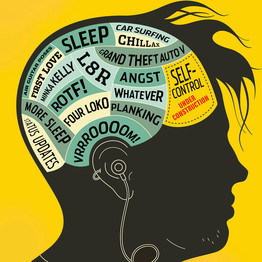A recent article published in the Nature Neuroscience Journal had some interesting information about why young adults behave the way they do, the findings shine some light on the old adage “if your friends jump off a cliff does that mean you have to?”
The journal titled “Adolescent Brains Biologically Wired to Engage in Risky Behavior” was written by Russell Poldrack, a Professor of psychology and neurobiology. The study supports the risks versus reward decisions for choices that an adolescent makes regarding their actions and behaviors. Professor Poldracks studies were based on the chemical reactions that take place in adolescent brains under Magnetic Resonance Imaging helping to visually map the area’s most affected during the risk versus reward process.
According to the research completed by Professor Poldrack and a team of associates at UCLA, he is able to hypothesize that the risky behaviors, such as experimenting with drugs or having unsafe sex, are actually “driven by over activity in the mesolimbic dopamine system, a system which appears to be the final pathway to all addictions, in the adolescent brain.” The study showed that the brains of adolescent teenagers had much higher levels of dopamine in their brains when contemplating risky choices as compared to the study of adults who had lower dopamine levels. The results of Poldracks research provide additional support in the difference between the adolescent and adult decision making process.
The neurological chemical changes help to support the evidence for the increase in adrenaline and dopamine that takes place when the belief is that the reward outweighs the possible dangers and negative consequences of risky behaviors. Although studies completed are not conclusive, they do help to identify possible biological reasons behind risk taking in teenagers.
